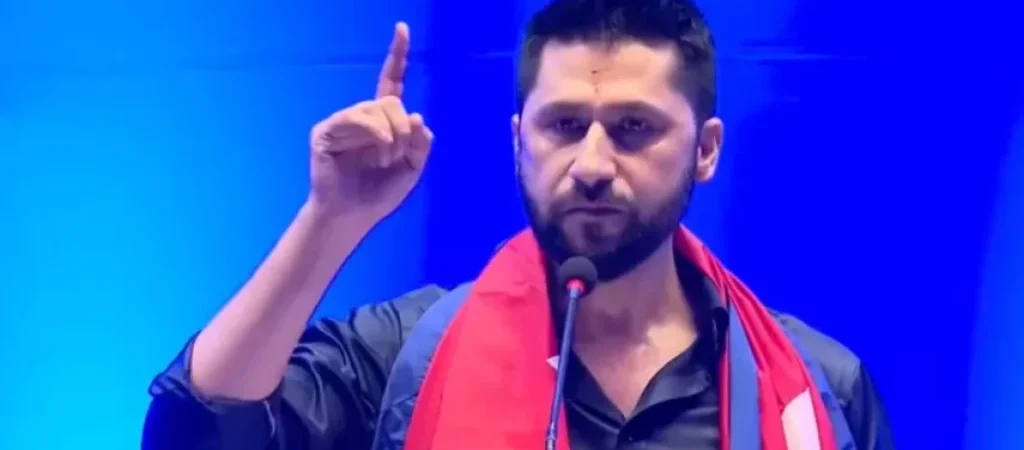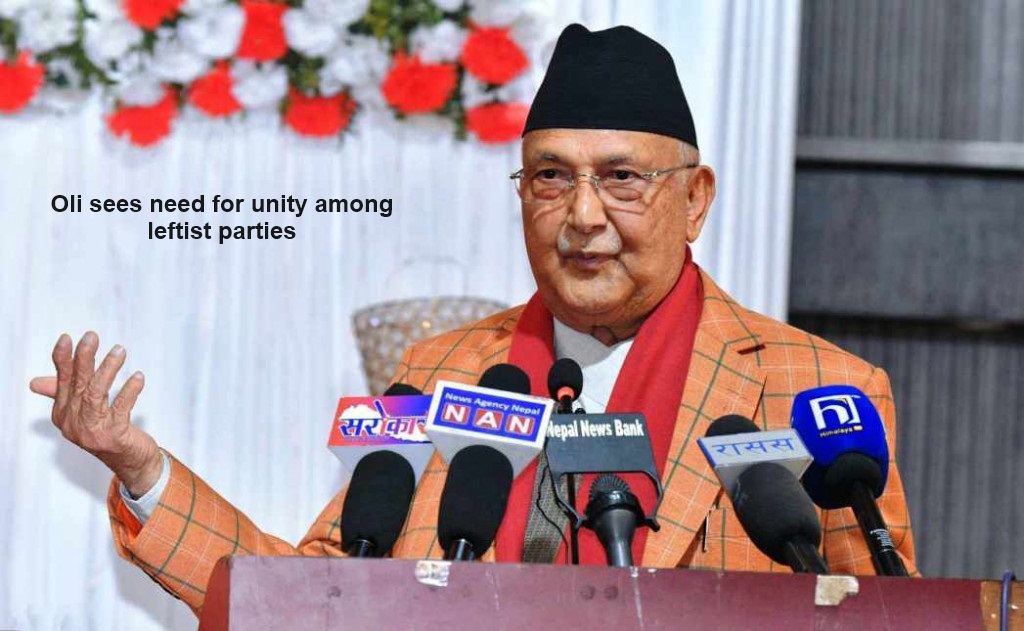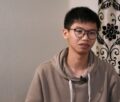Nepal: Political Stability Under Threat Again

By Rattan Saldi*
Nepal appears to be heading for a political instability yet again in the wake of raging controversy over allegations of corruption against Deputy Prime Minister and Chief of the Rastriya Swatantra Party, Rabi Lamichhane. Accusations of fraudulently swindling cooperative funds reverberated in the country’s Parliament almost daily, crippling its working in the winter session. The Minister has however denied the allegation.The Budget session of the Federal Parliament has been called to meet on 10th May but that also does not promise any better situation as both sides are vehemently adamant in their stand on Lamichhane, who heads the Home Ministry, going by reports in Kathmandu.
The main opposition Nepali Congress and the pro-Monarchist Rastriya Prajatantra Party have been demanding setting up of a Joint Parliamentary probe into the allegations of corruption against the Home Minister. He was under a cloud earlier as well.
Lamichhane was Home Minister in the previous government also, but he was forced to resign following detection of his foreign citizenship. He renounced his U.S. citizenship, adopted Nepali nationality again to face the by-election in which he emerged victorious with a bigger margin than his previous election.
During the last leg of Parliament’s winter session Nepali Congress led by Sher Bahadur Deuba remained steadfast in its demand for a Parliamentary probe into the allegations against Lamichhane. Prime Minister Pushpa Kamal Dahal, who is popular as Prachanda steadfastly opposed the demand. With both sides remaining adamant in their stand the House was abruptly prorogued as no meeting point could emerge even after the Speaker held two separate meetings with floor leaders and with leaders of the government and opposition parties.
Contrary to the belief that the least developed Himalayan nation, Nepal will achieve political stability after the Maoists came overground in 2006 and the Constituent Assembly declared Nepal as a Federal Democratic Republic on May 28, 2008, peace, and stability have remained elusive. Nepal saw 13 different governments since then.
In fact, since the restoration of democracy in Nepal in 1991, no Prime Minister could complete his full five-year term as Head of Government.

The three major political players, Nepali Congress, the Communist Party of Nepal (Unified Marxist Leninist) and the Maoist Centre have been ruling the country in turns. And they have been changing coalition partners in government formation too frequently to satiate their lust for power. Frequent somersaults by political leaders and fractured mandates have become the norm.
The only majority government in Nepal formed after nearly 24 years of political maneuvering by different players, including the King, was in 2017. It followed the first general election to Federal Parliament and provincial assemblies. The CPN (UML) and the Maoist Centre had fought the elections in tandem, forging a pre-poll alliance and won near two-third majority. Later in 2018, the two parties merged to form Nepal Communist Party, but it could not remain a monolithic for long.
The Maoist Centre withdrew support to CPN (UML) led K.P. Sharma Oli government while a faction of the UML led by Madhav Kumar Nepal formed Nepal Communist Party (Unified Socialist), that remained absent during a vote of confidence sought by Prime Minister Oli on May 5, 2021.
Oli lost the vote of confidence and was appointed Minority Prime Minister to prove his majority in Federal Parliament within one month. He started indulging in, what was termed as extra constitutional activities to save his government, but Nepal Supreme Court intervened to dethrone him replaced by Nepali Congress led government of Sher Bahadur Deuba who had majority 149 members with him in the 275-member House.
Deuba took over on 13th July 2021 and successfully held the country’s second general elections to Parliament and all seven State Assemblies. The ballot held in November 2022 again gave a fractured verdict. Nepali Congress emerged as the single largest party, winning 89 seats. After prolonged negotiations, Nepali Congress reached an agreement with the 32-member Communist Party of Nepal (Maoist Centre). And Prachanda formed the government on December 26, 2022 by roping in some fringe parties.

Fourteen months later, on March 4, 2024 to be precise, Prachanda ditched Nepali Congress, and allied with Oli’s Communist Party of Nepal (UML). And formed a new Cabinet with, including three Deputy Prime Ministers.
Both Oli and Prachanda share China centric communist ideology. Some prompting from China can also not be ruled out for their new alliance. Parleys are said to be underway amongst the three Left parties, the CPN (UML), Maoist Centre and CPN (Unified Socialist) headed by Madhav Kumar Nepal for communist reunification.
This puts main opposition Nepali Congress at a great disadvantage, but as political alliances are formed and broken in Nepal giving a go-by to principles and ideology, anything can happen between now and 2027 when next general elections are due in the country.
The new political equation is quite visible in Prachanda Cabinet’s decision to print the new Nepal Map showing Lipulekh, Limpiyadhura and Kalapani on the 100-rupee currency notes. Nepal’s claim over these territories was termed by India as baseless since these are under the administrative control of India since long. New Delhi maintains that these territories belong to India under the 1860 Sagauli Treaty between Kathmandu and the East India Company. Nepal had raked up the issue for the first time under Oli regime after 2020.
Back to Lamichhane issue. His party, Rastriya Swatantra Party, a first timer in Nepal politics, has gained National Party status in the very first elections it entered the fray, emerged as third largest party with 20 members and is strongly placed in a king maker position. The issue is likely to rock the Budget session of Parliament and push the country into an unstable political situation again, unless some tangible solution if not a middle ground is found out by the government and the opposition to the Lamichhane imbroglio. (SAT)
* The writer is a veteran broadcast journalist and Nepal watcher
-
Book Shelf
-
 Book Review
DESTINY OF A DYSFUNCTIONAL NUCLEAR STATE
Book Review
DESTINY OF A DYSFUNCTIONAL NUCLEAR STATE
- Book ReviewChina FO Presser Where is the fountainhead of jihad?
- Book ReviewNews Pak Syndrome bedevils Indo-Bangla ties
- Book Review Understanding Vedic Equality….: Book Review
- Book Review Buddhism Made Easy: Book Review
- Book ReviewNews Elegant Summary Of Krishnamurti’s teachings
- Book Review Review: Perspectives: The Timeless Way of Wisdom
- Book ReviewNews Rituals too a world of Rhythm
- Book Review Marx After Marxism
- Book Review John Updike’s Terrorist – a review
-
-
Recent Top Post
-
 Commentaries
Impasse over BRI Projects in Nepal
Commentaries
Impasse over BRI Projects in Nepal
-
 CommentariesNews
Yet another Musical Chairs in Kathmandu
CommentariesNews
Yet another Musical Chairs in Kathmandu
-
 CommentariesTop Story
Spurt in Anti-India Activities in Canada
CommentariesTop Story
Spurt in Anti-India Activities in Canada
-
 NewsTop Story
Nepal: Political Stability Under Threat Again
NewsTop Story
Nepal: Political Stability Under Threat Again
-
 NewsTop Story
Accountability Tryst With 2024 Ballot….
NewsTop Story
Accountability Tryst With 2024 Ballot….
-
 NewsTop Story
What Would “Total Victory” Mean in Gaza?
NewsTop Story
What Would “Total Victory” Mean in Gaza?
-
 CommentariesTop Story
The Occupation of Territory in War
CommentariesTop Story
The Occupation of Territory in War
-
 CommentariesTop Story
Pakistan: Infighting in ruling elite intensifies following shock election result
CommentariesTop Story
Pakistan: Infighting in ruling elite intensifies following shock election result
-
 CommentariesTop Story
Proforma Polls in Pakistan Today
CommentariesTop Story
Proforma Polls in Pakistan Today
-
 CommentariesTop Story
Global South Dithering Away from BRI
CommentariesTop Story
Global South Dithering Away from BRI
-
AdSense code



















